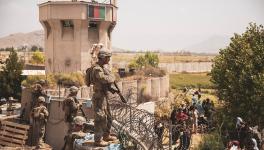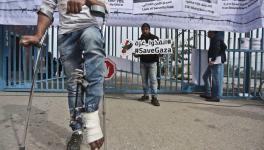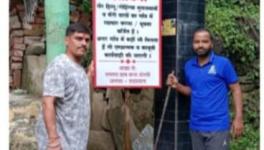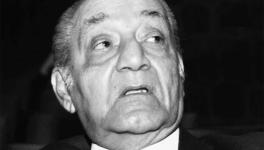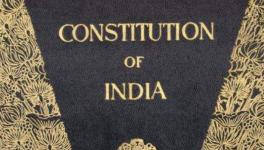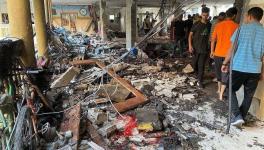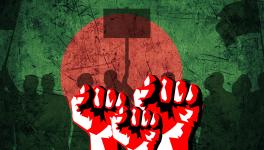NIA Can’t Besmirch Stan Swamy’s Reputation or Place in the Hearts of People
It may take time to get the Bombay High Court to clear Jesuit Father Stanislaus Lourduswamy’s name in the so-called Elgar Parishad case.
And it may take longer to get the Vatican machinery to launch the formal process to grant Sainthood to the 84-year-old priest, whose work among the Adivasis of central India and the poorest of the poor earned him the ire of mine-owners, state governments, and finally the central government.
But for those Adivasis and Dalits of Jharkhand and contiguous forest regions in other states, the man popularly known as Fr Stan Swamy is already a people’s saint.
On 26 April, the birthday of the man who died in a Mumbai hospital, a prisoner of the State, maintaining he was innocent of all charges filed against him, his admirers will install his bust in Bagaicha, his home on the outskirts of Ranchi. His ashes—he was cremated under Covid-19 protocols a day after he died in a church-run hospital on 5 July last year—are already a part of the soil he so loved.
In the national capital, the Federation of Associations of Catholic Archdiocese of Delhi has organised a memorial meeting to celebrate the life of Fr Stan Swamy.
It was from Bagaicha that he wrote, in English and Hindi, about the plight of those who had lost their land to the mining giants, the savagery inherent in people robbed of their forests, sacred hills and water. He adduced data and numbers to prove his arguments, figures that exposed the tyranny and lies of the establishment.
The State had failed in breaking his spirit. If it were in their power, they would dearly want to demolish his memory and the legitimacy of the struggles of which he was the moving spirit.
This was so very visible in the objections made by the National Investigations Agency, NIA, that a judge of the Bombay High Court expressed his personal distress at how the lower courts had dismissed the many bail applications Stan had made from jail, pointing to his failing health as a victim of rapidly advancing Parkinson’s disease, and then Covid-19.
The special judge had rejected the applications, casting aspersions if not outright mocking the priest who had been arrested on charges of being part of a conspiracy on the life of the Prime Minister of India. The bail application was then moved in the Bombay High Court and listed for hearing the next day.
When his lawyer told the High Court bench of Justices SS Shinde and NJ Jamadar that Stan Swamy had died a few hours earlier, the justices were rendered speechless. Later, Justice Shinde said, “[We] cannot keep aside humane considerations while deciding medical bail applications. We have respect for his work. Legally, whatever was there against him is [a] different matter. He was wonderful [for] the kind of services he rendered to the society.” Justice Shinde added that he usually has no time to watch TV but saw the online funeral service for Stan Swamy. “It was very dignified and graceful. So graciously and honourably they performed it.”
These words did not go kindly with the government. The NIA filed its objections. The judge had to fall in line and withdraw his words. If the unsolicited, absolutely spontaneous expression of regard for Stan was unprecedented as court procedures go, the whitening out of those precious sentences was no less resounding. The judge can honourably live with the fact that it was he who had on 28 May directed that ailing Father Stan be shifted immediately to a private hospital in Bandra from the prison infirmary.
Fr Stan’s counsel Mihir Desai requested the court to allow Jesuit Father Frazer Mascarenhas, former principal of St Xavier’s college, to participate in the legally-mandated magisterial inquiry into his death, as the organisation to which Fr Swamy belonged had designated him to be recognised as his “next of kin”. As a Catholic priest, Tamil Nadu-born Fr Stan was a bachelor.
Fr Frazer also sought that the court monitors the judicial inquiry into Swamy’s custodial death. Had Swamy been alive, he would have had the right to prove his innocence, and his next-of-kin should be given the right to clear his name considering that he died awaiting trial, the petition said.
The government has made a prestige issue out of this case. While the Telugu poet Varvara Rao and lawyer-activist Sudha Bharadwaj are out on medical bail, the others arrested still face the brunt of the harshest procedures in jail.
Stan’s death and the rejection of bail applications of the remaining imprisoned persons have kept the spotlight on the violation of human rights of all of the thousands of under-trials rotting in Indian jails, many on charges conjured up by police under political pressure.
Stan repeated the poet’s lines of “Caged Birds” not losing their spirit to sing--of freedom and wide-open skies. This, in one of his letters from jail to a friend, gave immense courage to the many campaigning across the country for his freedom.
Human rights activists, and not just those working on issues that Adivasis and Dalits face, have taken courage from the spartan life and fearless work of the ageing Jesuit in his role of an animator and teacher in his work in Bangalore, and as a documenter and communicator empowering and teaching women and young men about their rights in forest villages. His body of work in researching these issues is, in itself, a significant contribution to human rights studies in India.
But many, including this writer, see lessons from Stan’s life and work as inspiring other struggles on many contemporary issues—the erosion of constitutional institutions, the suborning of education, the massive alienation of land given to the corporate sector in the guise of development projects, and above all, the penetration of a corrosive and divisive ideology into all crevices of national life.
Peaceful resistance was the cornerstone of Stan’s work.
How would he have reacted to the “bulldozer politics” of the votaries of Hindutva and the use of the machines by the governments of Uttar Pradesh, Delhi and Madhya Pradesh to destroy the homes and economies of hapless Muslims? Stan was for building unities and collaborations between communities in safeguarding peoples’ ownership of resources. The focus on habitation, food and human rights created bonds that were useful in the struggle against communalism, sponsored by political groups or aided by state intervention.
Stan’s life and death are also an encouragement to the community and those in consecrated life, the priests and nuns. They are the most recognisable face of their community. Will they be timid if prayerful beings or bring in a dialogue of life with the people, which means immersing themselves in the sorrows, difficulties and tribulations of the poorest of the poor, and not just be the staff of an elite educational institution? This is the challenge the people’s saint holds for everyone.
The author is a human rights activist. The views are personal.
Get the latest reports & analysis with people's perspective on Protests, movements & deep analytical videos, discussions of the current affairs in your Telegram app. Subscribe to NewsClick's Telegram channel & get Real-Time updates on stories, as they get published on our website.











